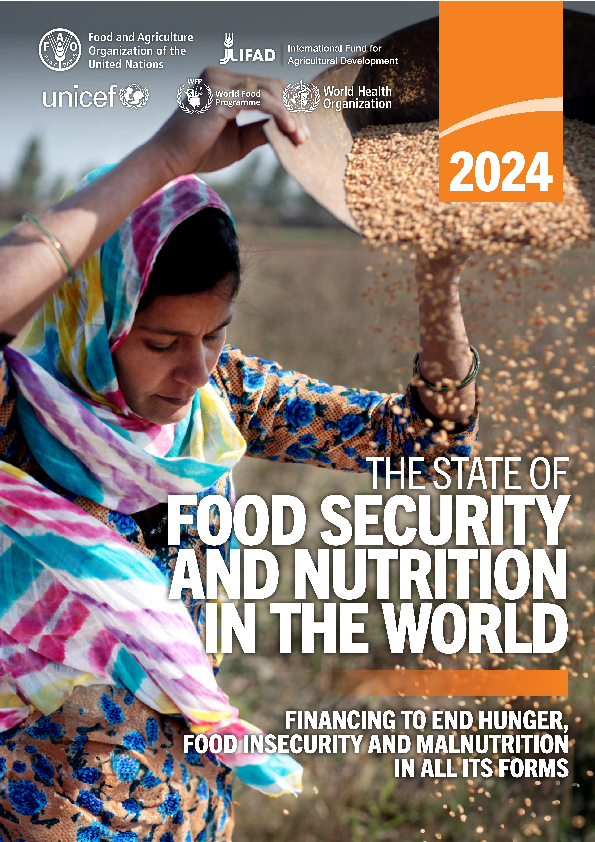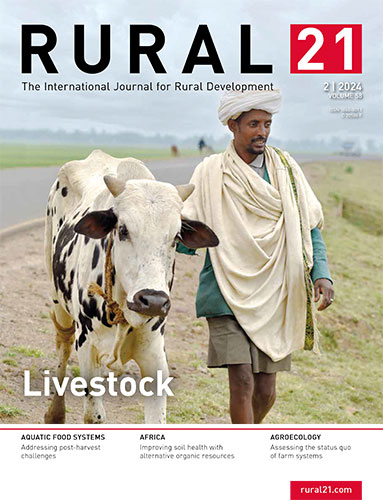- Share this article
- Subscribe to our newsletter
The State of Food Security and Nutrition in the World 2024
Around 733 million people faced hunger in 2023, equivalent to one in eleven people globally and one in five in Africa, according to the latest State of Food Security and Nutrition in the World (SOFI) report published in July 2024 by the Food and Agriculture Organization of the United Nations (FAO), the International Fund for Agricultural Development (IFAD), the United Nations Children's Fund (UNICEF), the UN World Food Programme (WFP) and the World Health Organization (WHO).
This year’s report’s theme, Financing to end hunger, food insecurity and all forms of malnutrition, emphasises that achieving SDG 2 Zero Hunger requires a multi-faceted approach, including transforming and strengthening agrifood systems, addressing inequalities, and ensuring affordable and accessible healthy diets for all. It calls for increased and more cost-effective financing, with a clear and standardised definition of financing for food security and nutrition.
Hunger continues to rise in Africa
Despite some progress in specific areas such as stunting and exclusive breastfeeding, an alarming number of people continue to face food insecurity and malnutrition as global hunger levels have plateaued for three consecutive years, with between 713 and 757 million people undernourished in 2023 — approximately 152 million more than in 2019 when considering the mid-range (733 million).
Regional trends vary significantly: the percentage of the population facing hunger continues to rise in Africa (20.4 per cent), remains stable in Asia (8.1 per cent),although still representing a significant challenge as the region is home to more than half of those facing hunger world-wide, and shows progress in Latin America (6.2 per cent). From 2022 to 2023, hunger increased in Western Asia, the Caribbean, and most African sub-regions.
If current trends continue, about 582 million people will be chronically undernourished in 2030, half of them in Africa, the report warns. This projection closely resembles the levels seen in 2015, when the Sustainable Development Goals were adopted, marking a concerning stagnation in progress.
Access to adequate food remains elusive for billions
In 2023, around 2.33 billion people globally faced moderate or severe food insecurity, a number that has not changed significantly since the sharp upturn in 2020, amid the COVID-19 pandemic. Among those, over 864 million people experienced severe food insecurity, going without food for an entire day or more at times. This number has remained stubbornly high since 2020, and while Latin America shows improvement, broader challenges persist, especially in Africa, where 58 per cent of the population are moderately or severely food insecure.
Food insecurity and malnutrition are worsening due to a combination of factors, including persisting food price inflation that continues to erode economic gains for many people in many countries. Major drivers like conflict, climate change and economic downturns are becoming more frequent and severe. These issues, along with underlying factors such as unaffordable healthy diets, unhealthy food environments and persistent inequality, are now coinciding simultaneously, amplifying their individual effects.
(FAO/ile)
Read more and download the report on the FAO website





Add a comment
Be the First to Comment